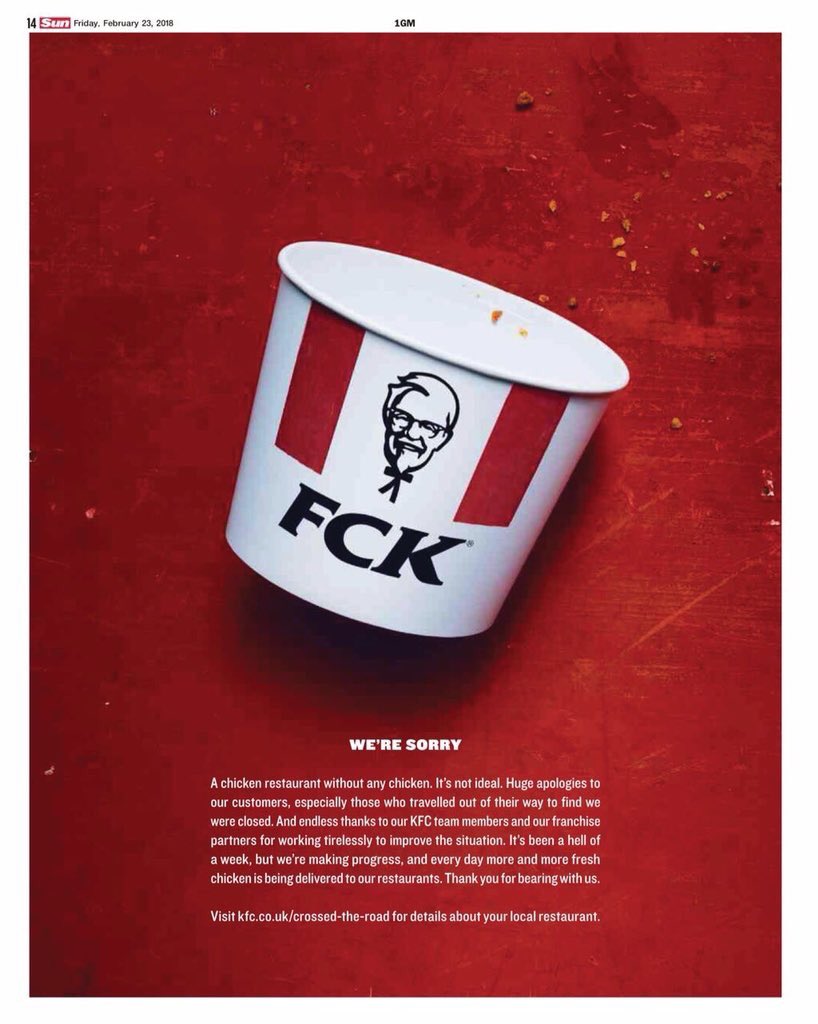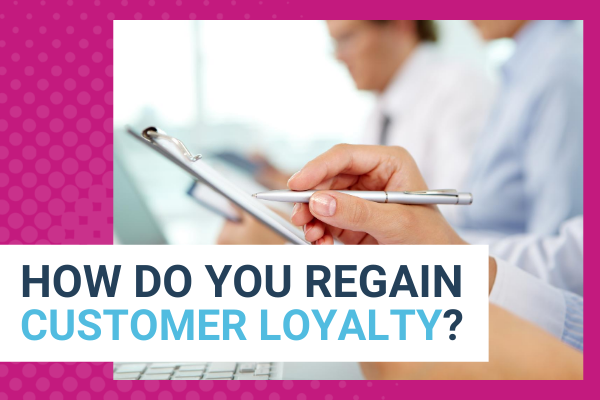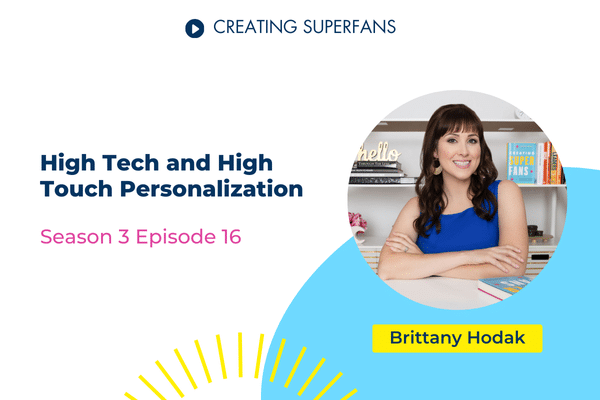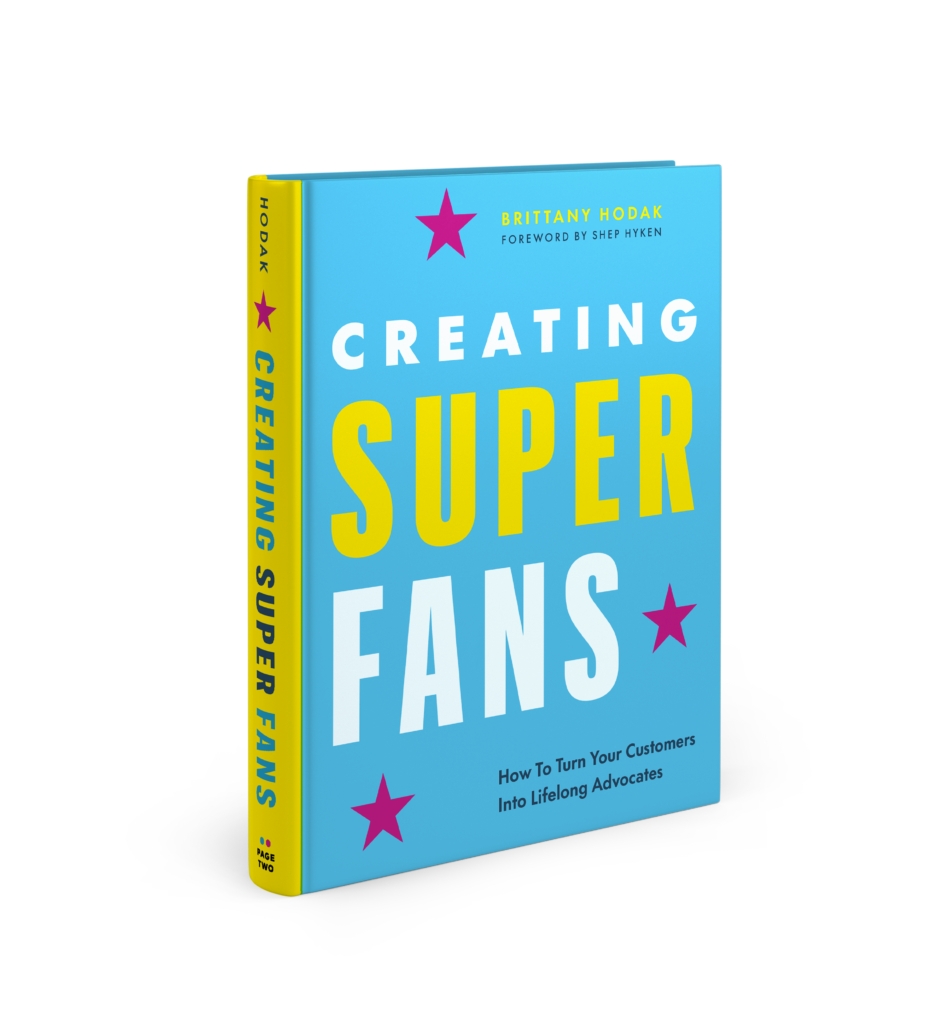At one time or another, we’ve all heard the phrase, “Everyone makes mistakes.” But what do you do when your mistake affects your business, and how do you regain customer loyalty afterward?
To put it simply, your customers don’t expect you to be perfect, but they do expect you to make things right when you mess up. The easiest way to do this is to follow the three steps to regaining customer loyalty, i.e. the “three As: Acknowledge the problem, apologize to your customers, and atone for your mistake(s).
In this guide, we’ll look at those three steps in detail along with a few examples for inspiration. We’ll also cover action items for each of the “As”. That way, the next time you – or a member of your team – makes a mistake, it won’t be such a big deal. After all, as common as the saying is, everyone really does make mistakes, and it’s inevitable that someone on your team will at some point. What’s most important is to handle the situation with patience, understanding, and dedication, so your customers know you’re going to make it right and stick around to let you.
What Prevents Customer Loyalty?
Before we get into the problem-solving part of this guide, let’s first break down how customer questions or concerns arise in the first place. Generally speaking, there are three main ways that you can unknowingly deter customer loyalty, all of which center around the customer’s expectations.
Your product or service wasn’t what they expected.
The first possibility is that your product or service didn’t meet their expectations. Maybe the customer heard about you from someone else or misunderstood your original sales pitch. Either way, by the time you’re asking, “How do you regain customer loyalty?” they’re under the impression that you deliberately misrepresented the quality of your product or service (so they would buy it). It’s your job to assure them that wasn’t your intention.
Your product or service wasn’t what they really needed.
The second possibility is that your product or service just wasn’t what they expected. In other words, although they don’t have an issue with the quality of their purchase, they do have an issue with its purpose. In this case, the customer simply isn’t a good fit. More importantly, however, this is another circumstance in which the customer may believe you misled them about your offerings in order to encourage their purchase. Once again, your goal is to show them that wasn’t your aim, and you’re going to make things right.
Your customer service efforts let them down.
Lastly, the third possibility is that your customer service efforts didn’t meet their expectations. Admittedly, they may have had a question or concern about your products or services beforehand. But, the “last straw” was being underserved by you or a member of your team or receiving service that made things worse. Regardless, in this situation, your job is all about damage control. How can you address their initial concern? How can you improve your team’s performance next time? And how can you make sure this customer knows you genuinely care about their happiness and want to improve? We’ll talk more about these questions shortly.
When Should You Invest In Customer Loyalty?
Regardless of the reason you’re asking, “How do you regain customer loyalty?” it’s important to keep in mind how big the problem is relative to your ability to fix it. Like a monetary investment, consider how much time, money, and energy will be necessary for a solution. Then, build a “damage control plan” based on that limit.
For example, if you operate an online store and a customer’s item arrived broken, that’s a simple fix! First, reach out to them personally, then replace their item. Done and done!
Not only is this a small amount of effort and cost on your end. You also provide a convenient solution, ensuring the customer purchases from you again. Over time, that return on your time (and the cost of replacing their original item) can be huge!
Alternatively, if a customer approaches you repeatedly to complain – or worse, verbally abuses your team members – it might be easier to make one last effort before ultimately letting them go. Remember: even though you may want to retain as many customers as possible, sometimes the customer isn’t right and the best option for you and your team is to let them move and to another business that, hopefully, is a better fit. In cases like these, the return on your time and energy just isn’t worthwhile.
Thankfully, the vast majority of customers do not fall into this category. In fact, 70% of unhappy customers are willing to purchase from a company again, provided the company resolves their concern. Even if they originally approach you or a team member with disappointment, you have the opportunity to turn their experience around and provide an encounter that they remember in a positive lens.
How Do You Regain Customer Loyalty?
With that in mind, let’s dive into some ways to regain customer loyalty, starting with the “three As.” As I mentioned earlier, following these three steps doesn’t just ensure that your customers walk away with their problem solved. It also demonstrates that you want them to (a) continue choosing you over your competitors and (b) tell their friends to do the same. Consequently, if you want to successfully regain customer loyalty after a mistake, the following process isn’t a suggestion. It’s crucial and virtually guaranteed to work when implemented correctly.
First: Acknowledge Your Mistake(s)
The first “A,” acknowledge your mistakes, is all about recognizing the problem. Like assessing the damage in a car accident – or, if you’re like me, assessing a mess your toddler made – this means looking critically at the issue at hand and admitting your role in it. Maybe you weren’t completely paying attention, maybe a member of your team made a clerical error that turned into something bigger, or maybe you made changes without thought for how they would affect your customers. Whatever the cause, you need to own up to the error unreservedly and say, “Yep. We messed up.”

Although it sounds simple, many company representatives or business owners skip this important step when issuing a formal apology statement. You’ve likely seen it yourself when the statement includes the words “if you felt this way,” and I’m sure I don’t have to tell you that, for the recipient, it feels like a slap in the face. Of course their customers “felt this way”! That’s why the apology is necessary in the first place!
To avoid this, make sure your acknowledgment also includes recognition of your customers’ feelings. Are they frustrated? Sad? Confused? A mix of all three? Whatever they’re feeling, validate their emotions and reiterate that you take full responsibility. That way, they know you’re not trying to pawn the blame off on someone else. You want to fix the entire situation, including how they feel when they interact with your brand. First, acknowledge your mistake. Then, acknowledge and validate the disappointment, frustration, or anger your customer may be feeling.
Case Study: KFC’s 2018 Chicken Shortage
One company that acknowledged a mistake exceptionally well was Kentucky Fried Chicken. In 2018, more than 800 of KFC’s locations in the United Kingdom shut down temporarily when they ran out of the very thing they specialize in: chicken. In response, KFC released a hilariously honest apology, including a cheeky rearrangement of their name to spell “FCK” and stating, “A chicken restaurant without any chicken. It’s not ideal. Huge apologies to our customers, especially those who traveled out of their way to find we were closed.” The full-page ad went on to explain the cause, assure customers it wouldn’t happen again, and take full responsibility. This essentially ticks all of the boxes for the three As. Plus, who doesn’t like a company that can make fun of themselves when they apologize, right? Please allow me to say: FCK, that’s a great acknowledgment and apology!
Second: Apologize to the Customer(s)
Speaking of apologies, that brings us to the second “A”: apologize to the affected customer(s). Like acknowledging your mistakes, apologizing demands authenticity. You can’t simply say, “Yep. We messed up.” and tack an “I’m very sorry” on the end. You have to illustrate that you’re truly sorry for a number of things including your role in the mistake, how it impacted your clients, and how that impact overflowed to the rest of their lives. Then, you have to follow through.
Looking back on bad formal apology statements, one common phrase you hear is “I’m sorry you feel that way”. According to public relations expert and co-author of The Apology Impulse, Sean O’Meara, these kinds of apologies fall into two categories: the “faux-pology” (when a company expresses limited fault) or the “passive apology” (using passive voice in a statement).
In either case, the worst thing you can do, as the one apologizing, is shy away from your responsibility and turn it back on your customers. In O’Meara’s words:
If you’re apologizing, you’re conceding that you failed… it’s just not the time to give yourself a character reference and say, ‘Hey. We’re great 99 percent of the time. We messed up here.’ If the customer is the 1 percent — if you’re that person that’s really unlucky — that’s going to make them feel worse because they’re like, ‘Okay. I’m the person that suffered from this rare and exceptional failure, as you put it. That gives me no comfort whatsoever.’
In your own apologies, keep this in mind and structure your language accordingly. Avoid excuses and the phrase “I’m sorry you feel…”. Instead, be honest, take responsibility for the discomfort or unpleasant emotions your customers experienced, then get to work fixing them.
Case Study: Netflix’s 2011 Switch to Streaming
For an example of what to do and what not to do, consider Netflix’s transition to streaming services in 2011. During this time, Netflix transitioned to offering both streaming and DVD rental options for their customers, the latter through a new company called Qwikster. However, what they failed to account for was first, the added expense for people who still wanted to use both services and, second, the inconvenience of paying for each service through its own portal. Unsurprisingly, customers were unhappy and many canceled their subscriptions following the change.
In response, CEO Reed Hastings shared an open apology letter in the company blog, explaining the changes, expressing his empathy for customers’ unhappiness, and assuring customers that they were “done” with pricing changes. What he didn’t do immediately, however, was solve the biggest problem and centralize billing under one system. Three weeks after his first apology, he realized his mistake, and Qwikster eventually rejoined the Netflix ecosystem. But the lesson was clear: actions speak louder than words, and your apology is only as good as the actions you take afterward to make things right.
Third: Atone for Your Mistake(s)
That brings us to the third and final “A”: atone for your mistake(s). As in your personal life, your relationship with customers depends on how you treat them not just today but in the long run. If your best friend’s partner kept apologizing but wouldn’t actually change their behavior, what would you say? You’d say, “Dump them!” right? If they’re not going to change, you don’t want your friend to have to put up with that. They deserve better!

In the same way, your customers understand if you make a mistake once and awhile. But, if you don’t actively work to fix it and, as a result, make the same mistake repeatedly, they’re going to leave. They want to know that you appreciate their feedback and consider them a partner, not just a sale or a number in a spreadsheet.
Renowned author speaker Dale Carnegie once said, “Pay less attention to what men say. Just watch what they do.” Likewise, in your business, remember that actions are at the heart of every answer to “How do you regain customer loyalty?”. Acknowledging your mistake and apologizing is undeniably important, but customers really want to know what actions you’ll take to re-earn their trust and ensure the same mistake doesn’t happen again.
Case Study: Sony’s 2011 Data Breach
A perfect example of this “A” in practice is the electronics brand Sony. In 2011, hackers released the personal information of 77 million PlayStation users to the public after targeting Sony’s PlayStation Network & Qriocity services. Almost immediately, Sony’s team jumped into action and contacted those affected, saying:
In response to this intrusion, we have:
1) Temporarily turned off PlayStation Network and Qriocity services;
2) Engaged an outside, recognized security firm to conduct a full and complete investigation into what happened; and
3) Quickly taken steps to enhance security and strengthen our network infrastructure by re-building our system to provide you with greater protection of your personal information.
By sharing their specific steps to correct the problem – and prevent similar events in the future – Sony demonstrated to their PlayStation customers that they weren’t just sorry that it happened. They were also committed to their customers and eager to earn the trust customers had in them when they shared their personal information initially.
In the end, Sony customers recieved a free month of PlayStation Plus and identity theft insurance as a thank you for their understanding and a temporary safeguard while Sony investigated the hacking.
With your own customers, a similar level of care is critical when you make a mistake. Remember: start with words (i.e. acknowledging your mistake and apologizing) but always, always follow up with actions (atoning).
Conclusion
In conclusion, although you never want to underdeliver for a customer, when you do, you often have the opportunity to deepen that customer relationship. In fact, when brands are consistently transparent with their customers about their mistakes, nearly 9 in 10 of those customers will give them a second chance and 85% will stick around, even during problematic times. Add that to the fact that after having a positive experience with a company, 77% of customers would recommend it to a friend, and the ROI of your efforts is clear. Plus, acquiring a new customer is far more expensive than retaining an existing one, as much as 5 to 25 times more expensive, in fact.
So, the next time you find yourself asking, “How do you regain customer loyalty?” don’t panic. And, more importantly, don’t assume that because you messed up, you automatically lost the affected customers forever. Instead, stay calm, stay humble, and stick to the three As. Soon enough, those customers may very well be superfans of your brand once again.
For more information about creating happy customers – or, even better, evangelists for your brand – check out my resources library or sign up for my 5-day course, completely free!
And while you’re at it, sign up for my newsletter and receive the latest customer experience and marketing tips and news in your inbox twice a month. 👍





